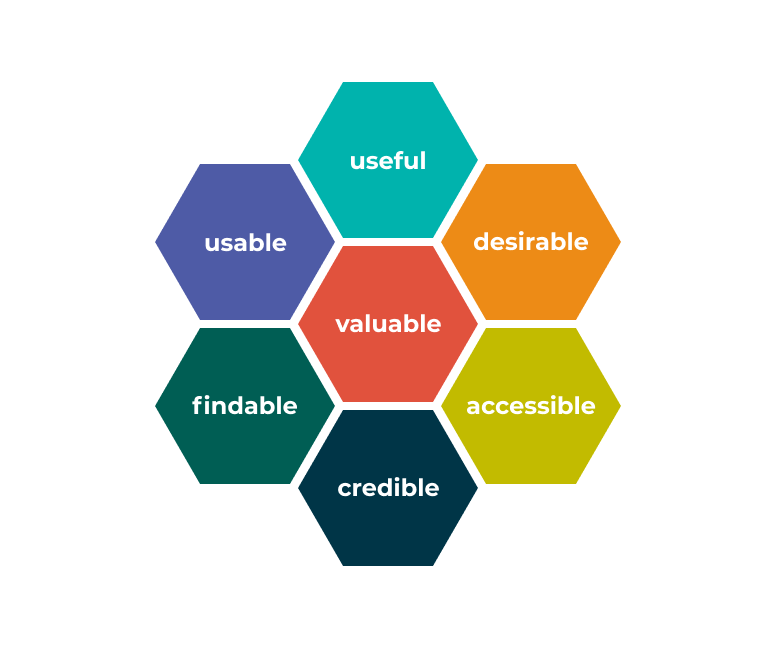
User Experience (UX) is critical to the success or failure of a course due to the fact that it is everywhere in our lives. UX is important to pay attention to all facets of the student’s experience in order to deliver successful education.
There are 7 factors that describe UX, according to Peter Morville a pioneer in the UX field:

- USEFUL
- USABLE
- Findable
- Credible
If a course isn’t useful to someone why would you want to bring it to market? If it has no purpose, it is unlikely to be able to compete for attention alongside a market full of purposeful and useful courses.
Usability is concerned with enabling students to effectively and efficiently achieve their end objective with a course.
Findable refers to the idea that the course must be easy to find; the content within it must be easy to find too.
Credibility relates to the ability of the student to trust in the course that you’ve provided. Not just that it does the job that it is supposed to do but that it will last for a reasonable amount of time and that the information provided with it is accurate and fit-for-purpose.
- Desirable
- Accessible
- Valuable
Desirability is conveyed in design through branding (university name), image, identity, ergonomics, emotional design. The more desirable a course is – the more likely it is that the student who has enrolled will spread the word of mouth.
Accessibility is about providing an experience which can be accessed by students of a full range of options – this includes those who are disabled in some respect such as hearing loss, impaired vision, motion impaired or learning impaired.
The course must deliver value to the student who enrols. Without value it is likely that any initial success of a course will eventually be undermined.